
This review may contain spoilers
No holds barred fun!
Flash Point is a good old fashioned Hong Kong crime drama with plenty of shoot-outs and hand-to-hand combat between cops and bad guys. The story is paper thin and the writers didn't worry about using almost every trope from the genre. What sells this movie is the fight choreography---your enjoyment will be determined on how much you appreciate watching Donnie Yen and Collin Chou fight in their prime.Donnie plays a detective who is always being disciplined for being too aggressive with perps in his job. The upper white shirts allow it because he's so good at closing cases. His latest case involves his partner, Louis Koo as Wilson, who has gone undercover with three vicious Vietnamese smugglers and their gang. The first half of the movie has a modicum of action, it takes the time for us to build empathy for Wilson who is not the brightest UC cop and Donnie whose only motivation in life is bringing down criminals. It also shows just how violent the three brothers are so that we can wait with anticipation for Donnie to clean the floor with them. As the officers close in on the bad guys and appear to have a strong case with numerous witnesses, the witnesses are murdered one by one until Wilson is the lone person to be able to testify. Character building time is over children, now the blood letting begins. I started thinking of Wilson as Timex, he took a licking and kept on ticking, it almost became comical how many times he was injured. Don't expect much from the basic plot because it had as many holes as a paper practice dummy.
The high point of this film was in the final act as the bodies started stacking up. Even something as simple as jumping a fence became a chance for doing something more creative. During one brutal battle, Donnie's character loses control and the blood lust overtakes him leaving him shaken. The final extended fight between Donnie and Chou was worth the price of admission for this movie. It was vicious, fast, and well-choreographed combining a number of styles and looking more like MMA than kung fu. While there were a few "movie moves", for the most part the brawling seemed fairly realistic. And brawling it was as the two not only kicked and punched but grappled on the ground with bones breaking. Donnie won a Hong Kong Film Award and a Golden Horse Award for Best Action Choreography and he earned it. The stunt guys who did the more dangerous work are to be commended as well.
The loose cannon cop who doesn't play by the rules and the bad guy who can get to anyone has been done a hundred times over and this film certainly didn't break any new ground. The entertainment value for people who love Hong Kong crime and action films lies in the ferocious tension filled confrontations. You may groan at some of the idiotic mistakes the police make but you may also hold your breath in wonder at how fast and limber Donnie and Chou were and remind yourself it may just be acting but these cats were fast as lightning.
3/1/23
Was this review helpful to you?
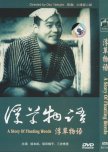
This review may contain spoilers
"The world is like a lottery, you take your ups and downs"
A Story of Floating Weeds is an early silent film by Director Ozu. Many of the tenets of his later films would be found in this story of an aging actor and his abandoned and found families. The tiny troupe's resiliency would be tested in life's ups and downs.Ozu loved this story so much that he would remake it in 1959. I wrote a review for that one and I can say that the two films are strikingly similar, right down to the staging of some scenes. The 1959 version is longer and of course has more dialogue, bit characters were given more scenes, as well as the lovers. I found the 1934 version charming even though it was not as fluid and as narratively filled in as the 1959 version.
Kihachi and his troupe of floating weeds, another name for itinerant actors, return to a small mountain village to perform their Kabuki plays. The rainy season pours not only outside but also inside the little theater bringing their performances to an end.
During their rain breaks, Kihachi visits an old lover and his beloved "nephew", actually his son, and enjoys time playing games with him and fishing with him. Shinkichi has graduated from an agricultural college and is continuing his studies. All seems blissful until Kihachi's lover, Otaka, finds out about his secret family and cries vengeance. She hires a young actress to seduce Shinkichi to get even with Kihachi over his deception. This plan blows up in her face when the two young people fall in love and Kihachi finds out and breaks up with her. Meanwhile, the struggling troupe runs out of money and has to sell everything and disband. When it's revealed to Shinkichi that his uncle is actually his father, the young man understandably refuses him. This is the man who had abandoned him and his mother. His mother, Otsune, pleads on Kihachi's behalf telling her son, he didn't want him to be raised as the son of an actor. Kihachi is left adrift, unsure of what to do next.
Some of the scenes Ozu would use in the remake were here, significantly, the powerful argument between Kihachi and Otaka on opposite sides of the street in the pouring rain. It wasn't as visually impactful, but certainly as emotional. Unlike the later remake, the film began and ended with a train ride due to the mountain setting. The final scene with Kihachi and Otaka traveling away from his son to an unknown future was poignant.
All was not melodramatic, Ozu knew when to throw some humor into the situation. Two actors in a horse suit and a little boy in a dog suit brought about a smile. Unlike his Tokyo Woman, he withheld the tragedy and overt drama, finding his footing in the banal and temperamental life of the family.
I found this film to be more rounded than his earlier work such as Dragnet Girl, Tokyo Chorus, and I Was Born…But. The story felt more thorough and the characters more fleshed out. The detailed composite scenes with pauses for reflection also felt more polished. In a couple of years he would delve deeper into family life, this time with an abandoned mother, with The Only Son. Though sound had been around for a few years, Ozu delayed using it until he felt it had been perfected. With the placards I was able to follow the action easily. I watched a restored Criterion version and it was cleaned up nicely compared to so many of these old films which have been left faded and badly pocked marked. They'd also added a simple music score which fit quite well without sounding too out of place. As always, I look for his teapot scene and even in 1934, it had its closeup!
Despite bitter and surprising revelations, true to Ozu, for the most part there were no histrionics. His characters, as always, were restrained. The only exception was when Kihachi struck the two women who betrayed him as well as his son. The physical violence was quite jarring in this emotionally guarded film. Sadly, Ozu kept the beatings in the remake.
Even in the silence of the black and white film, the beautiful settings shown through. The strength of Ozu's films are the people who nearly always feel authentic making you care about their problems. Kihachi and Shinkichi fishing in quiet unison in a river seemed like a father and son anywhere in the world. Shinkichi and his actress lover made his father worry that he wouldn't be able to be a great man, but Kihachi still forgave the young woman and laid his child's future on her slim shoulders. Kihachi and Otaka weren't always easy people to like but Ozu showed so many sides of them that you still found yourself hoping they would succeed and end up in a better place as better people. Ozu doesn't lay the answers out easily, rather leaves the fate of his characters only hinted at in his enigmatic way.
2/9/23
Was this review helpful to you?
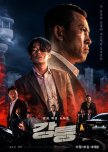
This review may contain spoilers
"If you fight you suffer whether you win or lose"
Tomb of the River aka Paid in Blood is a Korean crime film about a gang war erupting over a casino being built ahead of the 2018 Olympics in Gangneung. While the story didn't reinvent the crime wheel, there were strong performances that made for an engrossing film.Kim Gil Suk, played by Yoo Oh Sung in a brilliantly nuanced performance, was the head of one of the gangs overseen by an older gangster. The old gangster has become very zen and convinces Gil Suk against violence when he can. After the head of one of his other gangs allows drugs into his karaoke club, the old gangster offers Gil Suk management of the casino. Gil Suk, being the loyal guy he is, turns it down since it's not his territory. As far as he is concerned the casino belongs to the whole gang and not just anyone or any part of the organization. He is about to have his sharing is caring philosophy challenged when ruthless loan shark Lee Min Seok crashes onto the scene. Jang Hyuk gives Min Seok a lethal energy in a strong performance.
Min Seok starts slicing and dicing his way to the top in an effort to take over the casino. His brutally vicious pre-emptive attacks take the gangsters by surprise and it doesn't take long to carve them up. The code and loyalties are severed. Long standing alliances are broken, betrayals run rampant as everyone scrambles to survive and try to hold on or move up.
Despite all that has happened, Gil Suk makes a last attempt to negotiate with Min Seok to avoid more bloodshed. Min Seok trusts no one and believes that conversation never solves anything, he'd rather talk with his knife. Gil Suk's police friend, Lt. Cho attempts to reason with his friend, telling him romance isn't dead, let the police handle the villain. With the bodies of friends and colleagues having stacked up, Gil Suk has lost faith in the more civilized ways of doing business. "Romance is dead," he tells his friend. Min Seok puts it more succinctly, "Only death will end things."
Though they are still thugs in expensive suits, the waters are calm when the film starts, with everyone working together. Min Seok's gruesome entrance aboard a smuggler's boat strips away the façade of humanity, showing what he would do to survive. His rampage reveals the human greed and depravity lying below the surface of the unified gangs. Before it's all over, basic instincts are tested in a stormy war of survival.
Having seen numerous crime films, this was not a revelatory take on the genre, but it was well made and the acting set it apart from some others I have watched. The music, especially in the final scene, fit the mood perfectly throughout the film.
"Why did you turn this place into hell?"
"I didn't decide anything. The word decides these things. People just follow."
And indeed, one by one, the gangsters follow the path into hell, with no way back and no way out from the violent spiral downward. If you are looking for a new take on an old story, this will not be it. However, if you are in the mood for a bloody crime noir with good performances, this might fit the bill.
2/8/23
Was this review helpful to you?

This review may contain spoilers
“Things are never quite as scary when you’ve got a best friend.” — Bill Watterson
Learn from Experience 2 picks up where part 1 left off. Instead of focusing on Toyomi and Shintaro's ill-fated love affair, this film focused on the friendship of the three women at the center of the story. Given that their friendships were by far the most compelling story element in either film, this was a good thing.Toyomi has left home and is working at a dress shop having hidden her pregnancy from all but her best friend, Michiko. Yurie and Shintaro became engaged and he is now working for the Ministry of Foreign Affairs. Yurie, in that standard movie feat of incredible coincidence, walks into the dress shop where Toyomi works. They end up becoming fast friends unaware they have shared the same man and that Toyomi is carrying his child. When Yurie and Shintaro go on their honeymoon, Toyomi gives birth to her baby girl. Toyomi leaves the dress shop and stays with a friend of Michiko. Yurie hunts her friend down and generously invites her to come live with her while her husband is stationed overseas for several months. Toyomi resists but Yurie is a bulldozer and soon Toyomi and child are safely ensconced at Yurie's house. The viewer knows eventually Shintaro will return home and realize he has a child which of course he does. And that he will muck it up as well. Which he also does.
This film was more enjoyable for me for much of it because of the focus on the women and how Toyomi was cared for by her old friend and her new one. Even Toyomi's mother accepted Toyomi and her pregnancy. The strength and understanding of the women made this film and it was all the better for the lack of screen time for cowardly Shintaro. Even his friend could read him. "You can't say no to a rich girl."
In the end, Yurie asks Toyomi to give her daughter up so that Yurie and Shintaro can raise the little girl. They will make the child their heir as further enticement. Knowing the uphill climb before her and her child, in 1937 an illegitimate child would not be readily accepted, Toyomi acquiesces. Yurie dearly loves the baby making it easier for Toyomi to let go. As the sweetly uplifting music plays during the finale it feels like we are supposed to think it's a happy ending for everyone. Toyomi has become a kindergarten teacher, finally dressed in western style clothes. Shintaro is playing with the baby and Yurie has introduced the child to her parents. I still found the ending concerning Shintaro galling. The rich, entitled, man married the wealthier of the two women he was involved with and not only gets Yurie and her money, he also gets Toyomi's child. It would have been easier to swallow if Shintaro was constantly stationed overseas, or died when his conscience fell on him, and Toyomi and Yurie like a couple of sister wives raised the little girl together with help from Auntie Michiko and Toyomi's mother.
Perhaps part 1 could have been the only film and let Toyomi walk away tall, finding her way in the world with her unborn child. While giving her child up might have made it easier on the child and Toyomi, Toyomi's grief was not touched on in the "happy" ending. And Yurie never seemed daunted by the character of the man she had married. Naruse was never afraid to twist the knife so I'm surprised everything was wrapped up with a big pink bow on it regardless of the source material. The film had a melancholy slice of life feeling going for it and the nearly 3 hours for both films felt stretched rather thin. The compassionate and resilient women and their stellar performances will be the only memorable things I take away with me from these films and that's more than some films.
2/6/23
Was this review helpful to you?

This review may contain spoilers
"She cries and calls his name, but there is no answer"
Director Naruse Mikio developed a two-part movie from a novel written by Kicuchi Kan. As with many of his films, he centered the film around a woman, one who had been done wrong, and must find her way by herself.Toyomi and Shintaro were in love and planning to marry, that is until he visited his family. His father who had brought their rice company near bankruptcy needed Shintaro to marry someone who would bring in a large dowry. Toyomi's family was comfortable but not able to afford the money he needed. The father also wanted someone whom he felt would be a better fit for Shintaro's future as a diplomat. Initially, Shintaro agreed to meet Yurie, knowing he was not going to marry her. This being a Naruse film, Shintaro fell for modern Yurie almost immediately. And before you could say, duplicitous jerk, he was ghosting Toyomi way before cell phones were invented.
The best part of this film was that the women were portrayed as individuals. Toyomi was a traditional young woman who always wore a kimono. She was devoted to Shintaro and to her friend. Even with her devotion she could still see the writing on the wall with Shintaro. Her best friend, Michiko, who wore Western clothes and appeared more modern was fiercely loyal to Toyomi even as she readied for her own wedding. Yurie, was not the devil in disguise, even though she wore the most stylish of Western clothes, rode horses and spoke her mind. She might not have been head over heels in love with Shintaro, but she was willing to go along with her family when he didn't seem like he was unreasonable. Good luck, girl. As Toyomi and Michiko had discussed, "marriage is something of a gamble."
Shintaro was the weakest character. He used Toyomi and then on the turn of a dime he was in love with Yurie and willing to completely abandon Toyomi. He had loved her until someone better came along. His personality was bland and selfish. If he'd been honest with Toyomi, she might have been more understanding. The problem for her was that he tried to place the blame on his family, but unlike her he wasn't devastated which spoke volumes. To make things worse, she had a secret she was going to share with him until he enraged her with his false heart. Part one ended with the revelation of Toyomi's secret in a letter to Michiko.
Irie Takako gave traditional Toyomi a backbone and clear eyes. Takehisa Chieko made the other woman, Yurie, energetic and sympathetic. Aizome Yumeko as Michiko brought just the right amount of energy to the best friend's role. Takada Minoru was saddled with uninteresting, cowardly Shintaro and did nothing to elevate the character or performance.
I'm looking forward to the second part to see how this story plays out and how life turns out for the three women. My concern is that there may not be enough melodrama to fill two films and that Shintaro won't receive proper retribution for his disloyalty and poor treatment of Toyomi.
2/6/23
Was this review helpful to you?

This review may contain spoilers
Greased Lightning!
99 Cycling Swords is an almost average Taiwanese kung fu film from this era. I say almost average because the plot was particularly obscure even for a 1970's kung fu flick.What this film doesn't give us is 99 of anything. What it does give is a plot that might give you a headache as it goes round and round and round as the main characters try to discover the real identity of the traitorous Chu Er Ming who has been killing off the Four Dragons. There are plenty of mistaken identities, subterfuge, cross-dressing, and double crosses.
Polly Shang-Kuan Ling-Feng ( I know, it's a mouthful of a name) once again cross-dresses to appear as a man while investigating this killer always dressed in white. She runs afoul of Yueh Hua because she always dresses in white, too, and he suspects her/him of being Chu Er Ming. Yueh Hua actually gives a relaxed performance in this role. He can often appear overly uptight. In a small supporting role, Lo Lieh appears as a disciple of her uncle who is looking for her in her female form. Hu Chin plays the comely barmaid who may or may not be colluding with the Big Bad.
The fights seem never-ending from the first scene to the last. Lung Tien Hsiang as the Man in White did a fine job of kicking while fighting, a standout in a rather drab fight choreography overall. The director overused the backward filming and trick filming. I've never seen so much dinnerware kung fu! There were some creative uses of weapons, but much of the fighting came across as kung fu posing. Polly seemed quite slow.
The ending which involved magnets, compasses, green lights, and supposedly 10 of the same bad guy was rather confusing but that may have had to do with the poor dubbing. Then again, maybe not. There were few highlights in this film. I still haven't acquired an appreciation for Polly's acting yet, she tends to ham it up. I'll keep trying as I work through her catalog of films. Lo Lieh, as always, brings a solid presence, even in a small role.
If you enjoy old Taiwanese kung fu films or are a fan of Polly's, this is one to try. If not, you'd be best skipping over it.
12/7/22
Was this review helpful to you?
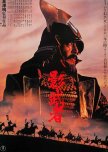
This review may contain spoilers
"The Shadow of a man can never stand up and walk on its own"
Kurosawa Akira had long dreamed of making Kagemusha. When Toho finally agreed to fund it, they were unable to finish financing it. In stepped George Lucas and Francis Ford Coppola along with 20th Century Fox and Suntory Whisky to see that the movie was completed.The story was based on real people and events leading up to the 1575 Battle of Nagashino. The warlord Shingen Takeda had longed used a double to protect himself during the tumultuous time. When his current double tired of the role, they found a thief ready to be executed who was his spitting image. When Shingen is killed the shadow has to take his place, convincing friends, family, and enemies that he is the real deal. Only a handful of advisors and guards know the truth. History would lead to a tragic end for the clan and the shadow.
This was not one of my favorite Kurosawa films. There were very few closeups and with a huge cast made it very difficult to identify people and their particular contingencies. Nakadai Tatsuya made a great foil for Mifune Toshiro in earlier films, but I found him lacking in this role. He didn’t have enough charisma and intensity to win me over. Despite the three-hour running time, little of it was spent on character development. Many pivotal scenes took place off camera. I had difficulty connecting with any of the characters and didn’t feel invested with any of them. They felt like distant obscure images.
The long still pauses Kurosawa used to great effect in his older movies became one long film this time. You have to be very patient to watch three hours of slow, quiet interactions from dozens of characters. If they had spent some of that time delving into the imposter’s feelings and life, giving me a better sense of who he was, I would have enjoyed it more.
Most of the battle scenes were underwhelming, often filmed in the dark. Two battle scenes used red lights in the background to simulate a castle burning, much as if it were a play on a small stage. Instead of seeing the action, a character was shown hearing the battle sounds. Even the final climactic battle left much of it unseen, mostly shown through the imposter’s reactions. I did find the final scenes of stunned, wounded horses attempting to rise to their feet deeply disturbing as the human carnage lay around them.
By all accounts, Kurosawa took liberties with the final battle. A ridiculously large rainbow over the ocean, while beautiful and unrealistic, was some distance from where the army would have traveled, but it did make for a nice shot. Kurosawa wanted to show the destruction of the Takeda by its enemies’ fire power even if some aspects of the battle went differently in real life.
In the end, as a body drifts past the clan’s flag, we’re shown that the currents of time are sweeping away not just the Takeda but a way of life as well. I learned several things from this film. There is a price to be paid for an unbridled ego. Blind loyalty leads people blindly to their doom at times. And never bring a sword to a gun fight.
Kagemusha didn’t have enough character development to make it a good character study and not enough quality battle scenes to make it a good war movie. In the end, I found it to be an impersonal, dryly told story at a glacial pace. Perhaps Mifune could have elevated it as he did other Kurosawa films, but that’s only wishful thinking.
12/2/22
Was this review helpful to you?
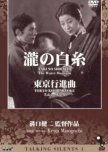
This review may contain spoilers
"It all comes down to chance"
“The river flows on, it always has, it always will.” Director Mizoguchi sent his lovers down the river to the waiting waterfall at the end in this tragic tale. He comes across as an early feminist showing his independent heroine go through many trials all at the hands of men, her every compassionate deed coming back to haunt her. Yet she never gave up or gave in even when there was little left to lose. He seemed to want to shine a light on the fact that women had little say in their lives, they could be abused, sold, and even betrayed by the male judicial system as well.Mizushima Tomo aka Taki No Shiraito performed a mesmerizing water show with a band of traveling entertainers. Known for her beauty she was also twenty-four-years old, an old maid at this time. Fate sent a carriage driver into her path. When a rickshaw passed the horse drawn carriage he drove on the road, the passengers in the carriage demanded he pass the rickshaw. In the process an axle was broken so he carried Tomo on his horse to the next town. She was instantly smitten but feared she’d never see him again. Once more fate intervened, and she found him sleeping on a bridge in the moonlight where she was walking one night. She learned his name was Murakoshi Kinaya. He’d been fired for driving the horses recklessly. His parents had died causing him to leave school in order to earn a living and now he was unemployed. Tomo told him she would help pay for him to finish law school so that he could become a great man. “As long as I breathe, I’ll remember my debt to you,” Kinaya promised.
Going into a Mizoguchi film I know better than to expect a happy ending and he did not fail that expectation. Tomo writes Kinaya letters inclosing cash for his tuition. Kinaya uses her dedication to spur on his studies and desire to succeed. During the winter, the show would have to close down and money became tight. Tomo always found a way to send Kinaya some money. Along the way, she helped two couples suffering at the hands of Minami the knife thrower and Iwabuchi the loan shark. Her generosity emptied her pockets and she had only one other means of earning the money for Kinaya to finish school and it led to the awaited tragedy. Let’s just say there is no leniency for a woman defending herself.
Kinaya and Tomo meet once again, both prepared to die. Tomo finds genuine joy in Kinaya’s success and is complete. Kinaya acknowledges he would still be a laborer if not for her sacrifices. And the water flows on, along with their short and ill-fated love.
The copy I watched of this film was very badly damaged. This was a silent film per se, but also had music and a benshi narration. I found the voiceover to be distracting and ended up muting it to focus on the performances. Even with the fading and scratches, Tomo’s water show was magnificent and a bit of a mystery as well. Irie Takako was beautiful and gave a moving performance as the compassionate woman who just wanted to be loved. Whether showing Tomo performing her water tricks, falling in love, helping those who needed it, or fighting for her life, Irie made Tomo believable and a worthy, if flawed, heroine.
Mizoguchi wasted no chance to show that it was the men in the story who created the problems for Tomo from the knife thrower to the judges. There’s an old saying, “No good deed goes unpunished,” and for Tomo this was true. Despite all she suffered for the ones she loved, she remained resolute to the end, cleansed as if from flowing water, until all that was left was joy and satisfaction.
11/21/22
Was this review helpful to you?

Scorching Sun, Fierce Winds, and Wild Fire
1 people found this review helpful
This review may contain spoilers
A Violet by any other name would still be as fierce!
Scorching Sun, Fierce Wind, Wild Fire boasted an all-star kung fu cast---Angela Mao, Chang Yi, Lo Lieh, Dorian “Flash Legs” Tan, and Roc Tien Peng. Despite a huge cast, most of them familiar Taiwanese film fighters, this made in Taiwan flick fell apart due to haphazard writing. Only an unlikely bromance saved this movie.You would never know this was set during the Chinese Republican Era by looking at it. The costumes for the most part could have been from almost any era used in kung fu movies. Guns were introduced at one point by government officials which brought it into the Republican era. A possibly 1960’s car in one scene took the audience too far forward in time!
This should have featured Angela Mao since she was Violet, the mysterious rebel leader always dressed in….violet…and with her face covered. Sadly, she was only able to shine in the final grand fights. Roc as a rebel leader from the south was rather lackluster in his scenes. Chang Yi is always a good baddie and he didn’t disappoint as Wu Chi, the traitorous head henchman for the local warlord. The best part of the movie for me, were Lo Lieh and Dorian Tan as two escaped prisoners. They formed a reluctant bromance that was both humorous and the most sincere relationship on the screen. I truly enjoyed their interactions and fights. Fights against each other and fights against the baddies.
The story revolved around the rebels and a missing treasure map. Roc had half of the map and the warlord had the other half. 100,000 bars of gold were the prize for whoever could gain both pieces. Honestly, that flimsy story was the excuse for people to fight from beginning to end. Some fights were better than others. Chang Yi was featured in a great many of them. Aside from a fight with Lo Lieh and Dorian against some bandits and officials only the final 20 minutes of fights were worthwhile. Dorian’s legs did most of the heavy lifting, kicking in the fights. Angela finally had some face time on screen during the final fights showing her fierceness. I should mention that the nefarious Wu had a poisoned knife that melted people-quite gruesome.
I have to mention that some of the music sounded like it was lifted from the original Star Wars movie. You never know what you will hear in an old kung fu film!
If you like the cast and Taiwanese kung fu films from the late ‘70s this is one to try out. Don’t expect to see too much of Angela, lower your expectations, and hi-yah!
11/18/22
Was this review helpful to you?

This review may contain spoilers
"Cover your belly button!"
Raiga: The Monster from the Deep was the second in the Raiga trilogy and arguably the best of the three. The actors weren't better, nor the sets, but the monster scenes were much improved.The whole Raiga trilogy was low budget, super sale bargain bin quality. Despite its lack of finesse, story cohesion, and quality CGI, it was apparent how much the director loved this Kaiju. If you've ever seen the third one it leaves no doubt his determination to tell Raiga's story, however convoluted it was.
This Raiga had evolved to be able to walk on land, much to Asakusa's disappointment. The city was torn up not once, but twice in this movie.
The human story revolved around a widower and his three teenage daughters. He had two buddies and all were on the festival committee which is very important to remember when a monster is bent on destroying the town. This widower who hawked T-shirts was interested in a young woman and tried to hide it from his children who were all too aware of his feelings. Commander Kito, he of the eye-patch and deranged personality, led the defense forces. Between his efforts and Raiga's not much was left of Asakusa. All of the acting was over the top with unending mugging for the camera. How well you can stomach this kind of comedy may determine your enjoyment of this movie. For me, it didn't work.
The Bone Fish/Fish Born of the Devil/Dragon Killers made an appearance again, attacking people on boats and land. Raiga battled a sea monster in the opening scenes and later another Raiga. The lightning bolts and fire breath were more spectacular than in the first movie. Aside from the monsters, the rest of the CGI and miniatures were low quality, especially for 2009. The director made liberal use of red and green lights for both human and monster scenes.
Though I would never question the director's passion for Raiga, I might question his abilities for putting a seamless, coherent story together and understanding the film's identity. Was it a parody? Most probably. Was it a comedy? Your mileage/kilometerage may vary. Was it a horror? If you are super sensitive to bone fish tearing people's throats out-then maybe. Was it a Tokusatsu? Yes. An obvious rip-off of Godzilla, at least the Kaiju scenes, for the budget, were not bad.
The synopsis says the movie has something to do with global warming. There actually were a couple of lines wedged into the ending to propose that idea, very ham handedly. This movie was all over the place and hard to take seriously even for the genre. After the final battle much of the city had been destroyed but the main characters were shown laughing and frolicking on a hillside. That weird juxtaposition had me wanting Raiga to come back and mark his territory again right where they were, though I'm not sure they would be deserving of the rainbow.
If you are wanting to try the Raiga movies, this is the one to start with. It shows the best of the clips from the first Raiga and how much the monster development had improved. The third film was more of a fan service and only for the most devoted of Kaiju fans, actually, you'd really have to love Kaiju to attempt to watch this movie. It could almost be put into the it's so bad it's good category...almost.
11/13/22
Was this review helpful to you?

This review may contain spoilers
Gamera-The Friend of All Children
In Gamera's final film, he returns in a new form. Much like Mothra's job of protecting the environment was handed down to her children when she passed on, Gamera's progeny had to take on the mantel of protector in this film. As were the Showa era films, Gamera the Brave was aimed at children with a solid dose of green and purple blood for slightly older children.After sacrificing himself in 1973 to rid the world of the Gyaos the big turtle leaves a Kaiju hole in the world, with no one to look out for Japan. That is, until a young boy, Koru, finds a turtle egg and a red glowing turtle shell. There are lots of cute scenes with the boy and his friends getting to know the flying baby turtle. His mother had died recently and the little turtle begins to open his heart. He names the turtle Toto after the nickname his mother had given him. Nothing stays quiet for long and soon Zedus a man-eating Kaiju with Dilophosaurus like frill comes stomping into town eating people and tearing up the property. Baby Gamera aka Toto instantly grows much larger but well below his fighting weight. He does manage to drive the troublemaker out of town but not before he's badly wounded. The government takes him to a secure location hoping they can make him grow larger to be able to combat the new threat.
As the boys search for Toto, their friend Mai, who had surgery and was given Toto's glowing shell for luck tells the boys that Toto needs the red glowing good luck charm. He needs that luck all too soon as Zedus shows up again looking for Baby Gamera. This scenario starts out tortoise slow, but eventually gains momentum and ends with a relay of small children running the glowing object against the escaping crowd toward the danger in order to try and save their turtle hero.
Gamera the Brave combined guys in rubber suits with competent special effects. The monsters fighting amongst the buildings and perspective were quite good. The fights were done well as each opponent revealed new abilities and upped the ante. Toto's face was cute and expressive which people either seem to love or hate. I thought for a reboot it made sense because he was being portrayed as a juvenile. By the end he was growing into the Gamera he was intended to become.
Though aimed at children, Zedus' bloody teeth and chomping let you know he'd eaten people for lunch. Gamera was also impaled by Zedus' purple tongue at one point. Other than the Kaiju blood spurting, the rest was kiddie friendly. For those who are sensitive to it, there was alcohol served in his dad's café.
The children were all likeable though Tora pushed the envelope of annoying near the end. The children's relay to help Baby Gamera was sweet and surprisingly heartwarming.
This is clearly a movie for children and one for Gamera fans. Unless you fall into either category you may find it difficult to sit through. For Gamera fans it's a bittersweet farewell to the giant turtle. It's also my last Gamera film to watch having saved his swan song for the final one. This would have made a nice reboot for the gentle giant who loves children, but thus far it has not been meant to be. For now it's goodbye Gamera, The Friend of All Children.
10/28/22
Was this review helpful to you?
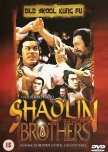
This review may contain spoilers
Two words-Hopping Vampires!
From the moment I saw the dark forest shots and familiar waterfall I knew this Hong Kong movie was filmed in Taiwan. I immediately lowered my expectations. Good thing because the story was almost incomprehensible.My hopes were heightened when the movie began with a line of hopping vampires, hopping through town guided by a Taosist priest. Those hopes came crashing down pretty quickly.
The gist of the plot is Ming rebels trying to survive against their new Ching overlords. Two of the main players David Tang Wei and Carter Wong had studied with the same master and now ten years later were on opposite sides. As he often did in later movies, Carter played the baddie. David’s sister Fan Ling also joined in the fighting. Tung Li was a Ming General working as a rebel, too.
Carter had stolen the masters poisonous needles and the rebels had a secret list. Now that the basics are out of the way, it was time to get down to some fighting. David was poisoned by the secret needles and the rebels sought to send the secret plans via “hopping vampires” as the area was crawling with Chings.
The movie muddled around for a bit with the “hopping vampires” being taken through town and getting into fights. Finally the Ming General and the brother and sister rebels took on Carter and the blood started flowing.
The body count was high, but due to the poor storytelling and often dark scenes I wasn’t emotionally attached to any of the characters.
The initial fights were mostly hack and slack sword fighting. In the grand finale fights we finally got some hand to hand combat. You don’t have Carter Wong in the movie if there wasn’t going to be some kung fu. There was a lot of wire-fu, especially for Fan, but most of it was tolerable.
Joseph Kuo made sure there were some interesting shots but the story was haphazardly put together. The fights weren’t interesting enough either to hold my attention. Only for hard core fans.
10/25/22
Was this review helpful to you?
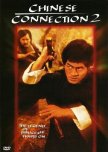
This review may contain spoilers
I'm trouble!
Chinese Connection 2 aka Fist of Fury II is a sequel to Bruce Lee's 1972 Fist of Fury. Not to be confused with Jackie Chan's New Fist of Fury that had some of the original cast in it. The only returning cast member in this film is Tien Feng.It takes place right after---50 YEAR OLD SPOILER ALERT---Chen Zhen's execution in the original.
After Chen Zhen's death, the ruling Japanese fear the kung fu schools will band together and oppose the foreigners. Even though the Japanese leader was killed in the first one, power hates a vacuum and Lo Lieh's Miyamoto takes over and continues to terrorize the locals. Tien Feng had become the ad hoc leader of the Ching Wu school and Hsieh Han was the leader of the other big school in town. Neither had any luck with the Japanese, with the Ching Wu school being closed down. In comes Bruce Li/Ho Tsung Tao as Zhen's brother Shan. He's disgusted that the local schools haven't fought back and is determined to not only avenge his brother's death but restore the honor of Shanghai. Yeah, good luck with that fella. No matter how few or how many Japanese fighters showed up the kung fu heroes ended up with their butts handed to them. They must have all had their beginner belts because the Japanese dojo janitor could have beaten them.
Shan faces opposition not only from the Japanese overlords also including Miyamoto's right hand man played by Luk Chuen/Shikamura Yasuhiro but also the local Chinese kung fu students. Every time Shan puts a beat down on the Japanese thugs, the students end up paying the price and their numbers were dwindling because of it. They didn't care whether they handed him over to Miyamoto or ran him out of town. Ultimately, it was a kung fu movie after all, Shan and Miyamoto face off in the grand finale.
As far as a Bruceploitation movie goes, it wasn't bad and didn't lean too heavily on trying to duplicate him as some did. Bruce Li did bear an uncanny resemblance to him and was a decent fighter, but not near the level of the legendary Bruce Lee. And making him the brother helped to put some distance between the two. In the last fight they did have his face scratched like in Enter the Dragon. Lo Lieh also made a move with red hands like he did in his hit film King Boxer.
The fighters were pretty good, though there was way too much wire-fu and flipping around for my taste. Bruce Lee never had to rely on those gimmicks. The fights weren't too slow, some were better than others. There was a nunchuck scene that should have been omitted as it was clunky and seemed out of place. I really enjoyed the finally fight. The two actors were fully engaged and remembered to act as well as fight. The cast was strong, aside from the actors already mentioned there were many familiar supporting and bit players in it, many of whom were hired for their stunt and fighting abilities.
Overall, it was a well made kung fu film for the time, though it did tend to run in circles. It was actually a coherent sequel and respectful to the original. Again, I grade these 1970's niche movies on a curve, they had small budgets and a specific audience. Like other movies about Chen Zhen, such as Legend of the Fist, the lasting legacy of Bruce Lee and his movies live on. While there was an attempt to capitalize on his heightened popularity I'm sure, they were still able to come away with a kung fu movie that made a little sense, something we don't always see in this genre.
9/27/22
Was this review helpful to you?
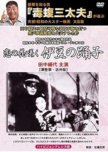
This review may contain spoilers
"I am a wandering bird in tears"
In a chaotic world with war and a financial depression The Dancing Girl of Izu ponders whether love or stability is more important. A happy heart or a full belly? Safe shelter or life on the road?College student Mizahara helped out a band of traveling performers and became friends with the head of the group, Eikichi. As he traveled with them, he fell in love with Eikichi's sister, Kaoru. Eikichi had inherited a gold mine but squandered his money and sold it to Zenbei, a friend of his late father. Now he and his wife and sister are forced to earn money as itinerant entertainers.
A disreputable engineer who had worked with Eikichi, tried to shake down Zenbei for a reward for showing him the vulnerable mine years ago. Zenbei gave him some change and kicked him out. The engineer went to Eikichi telling him that Zenbei had taken advantage of him when he bought the mine so cheaply and motivated Eikichi to ask for more money from the mine owner. Zenbei refused to give Eikichi money outright but offered money to buy his sister. Eikichi, who was furious at losing his reputation along with his money had no problem with throwing his sister to the wolves.
Mizuhara intervened by confronting Zenbei who also happened to be the father of his best friend. At this point, in the movie we find out that all is not as it seems. Mizuhara realized this as well and also realized that Kaoru's best chance for "happiness" was not with him.
Zenbei and Mizuhara made choices for Kaoru, as did her brother. Regardless of their motivations, Kaoru was left without choices, her future in the hands of the men around her, some she didn't even know.
Director Gosho used the beautiful Izu Peninsula to good effect with the mountains and streams often in the background. The character development seemed to come second to the melodramatic plot, leaving me disconnected from their trials. It was hard to see a strong love developing from the short scenes the lovers had. Their feelings came across as more of a holiday crush. Probably best one of them was thinking pragmatically.
This silent film had no music and I'm unaware if it ever did. The film was originally intended to be a talkie but ran short of money. The copy I watched was faded with salt and pepper pocking but it didn't take away from my viewing experience. I was more curious if the sides had been cropped as there were times people's faces were cut off which looked more haphazard than artistic.
The acting bordered on overacting at times as happened with some of these older films but overall they did a good job. I usually enjoy Tanaka Kinuyo's performances and it was interesting watching her in one of her earlier movies. She was required to cry often which could wear thin after the third or fourth crying jag. The tears were understandable as her character was not consulted on her future, but as I said, it started to feel like overkill even for a supposedly very young girl experiencing love and heartache for the first time.
The start-up was misleading with a missing "geisha" which had little to do with the plot, but once it got past that red herring, the story started to gain traction. If you enjoy silent films this is an emotional one of young love to try.
"I am a floating weed
I spend my youth in traveling
In every waking moment
flowers of love and sympathy bloom"
9/17/22
Was this review helpful to you?

This review may contain spoilers
"If you don't change it yourself, one day it'll change you"
The only things special about Special ID were Donnie Yen and the bone crunching fights. The story retread most of the gangster clichés and struggled to be consistent.Donnie Yen played Chen Zi Long, a deep undercover police officer. He's ready to go back to active duty but as always he's required to do one more job. He's trying to bring down Boss Xiong (Ngai Sing) but along comes his old buddy Sunny (Andy On) who has acquired his own gang and gone bonkers evil. Then much to his chagrin he's partnered with a mainland cop, Fang Jing (Jing Tian). Throw in a super tight relationship with his mom that takes up a lot of air time and Chen is afraid that he is close to having his cover blown which would put his mama in danger.
Special ID started out as a gritty gangland drama but then seemed to lose focus. The relationship between Chen and Fang seemed especially confusing as it went back and forth trying to decide if it was going to be a buddy cop adventure or a romance or antagonistic work friends. Without explanation, a lot of time was invested in Chen's relationship with his mother. The movie had a real identity crisis that never quite resolved itself. Thankfully, plot is not the priority in a movie like this. Donnie went all out for his fight choreography. His fight with Ken Lo was brutal and showed that Ken still has it, watch for him to go into the splits! As often happens, one fight multiplied and the next thing you know Donnie was fighting a knife wielding gang. His final fight with Andy mixed in some MMA grappling along with his martial arts, mostly it was a vicious no holds barred fight to the death. Bruce Law's car chase choreography was brilliant. While Fang Jing seemed out of place at times, the car chase with her and Sunny wrestling inside and outside a Land Rover at full speed was death defying and amazingly shot.
Donnie did an excellent job as the battle weary undercover cop, even when his character was passively dragged from one place to the next. Andy's Sunny wasn't very well drawn but he made for a serviceable Baddie. Jing Tian seemed far too slight to be the badass she was supposed to play, but made the most of the female sidekick role with all it's cringey dialogue. It was good to see old timer Ken Lo showing off some of his Muy Thai and Taekwondo moves early in the movie.
As I stated, there wasn't anything creative or consistent about the story but that's not usually the draw to a Donnie Yen movie anyway. The fights were deliciously creative and consistently good showing that Donnie is a master at what he does best. I just wish the story had been stronger so that I could have rated this higher.
9/4/22
Was this review helpful to you?

 33
33 99
99 7
7





















